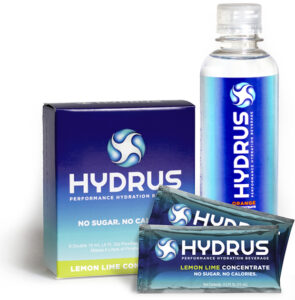Traditionally Dry Eye Care Begins with Eye Drops
Dry eye treatment typically begins with eye care professionals recommending eye drops and lubricants to be applied topically to identify ones that best alleviate patient symptoms and possibly begin to restore tear film stability. Most eye drops attempt to provide relief after application, while others, including prescription eye drops, aim at relief that takes weeks or months. New prescription nasal sprays coming to market are designed to stimulate tear production as a way to stabilize tear film from the inside out. These typical first line treatments for dry eyes are administered to provide relief, but not necessarily to treat a root cause of dry eyes.
Dehydration Is the Root Cause Most Often Ignored
When dry eye patients ask their eye specialist about hydration today, most medical professionals recommend they, “drink more water” and swiftly move on to eye drops, lubricants or other temporary topical treatments. Some may go further to cite how little evidence has been written showing direct link between dry eyes and sports & fitness drinks. However, studies do show that whole-body hydration is an important consideration in dry eyes. Moreover, an increasing number of articles are being written that link whole-body hydration with dry eyes on top of common sense that being effectively hydrated helps all parts of the body to function better, especially something as sensitive as moisture in eyes.
Traditional Choices Don’t Work
Water is the obvious choice to treat dehydration, but inside the body water flows into cells that have higher concentrations of electrolytes, particularly sodium. Therefore, an adequate balance of water and electrolytes is necessary to provide effective hydration, but that is not all. First, water and electrolytes need to absorb into the body’s tributaries before distributing out to cells to provide effective hydration.
Up to now, the traditional hydration drinks that have been shown to be more effective than water alone use sugar to assist electrolyte absorption via what scientist call the glucose-sodium co-transport mechanism. This discovery by Dr. Robert Crane in 1960 leveraged the concept of IV therapy used to hydrate patients in medical centers. It enabled beverage products for oral consumption to enhance hydration beyond water alone, but they were designed for severe illness (oral rehydration solution), mild illness (pediatric rehydration drinks) and activity (sports drinks), not for daily use!
The very absorption mechanism sugar enables makes the products unhealthy for daily consumption throughout the day. Since the 1990s, sugar-free drinks with electrolytes have emerged and been marketed as “healthy lifestyle” beverages, but they are not designed with science that assists water and electrolyte absorption.
Well-being Hydration Is A New Purpose-Built Solution
Dry eyes take a new beverage category designed to deliver effective water and electrolyte absorption without unhealthy sugar for everyday use. Not only will this raise daily whole-body hydration and improve eye moisture, consumers and patients will experience a number of additional functional, emotional and social benefits from higher cognitive function to relief from symptoms of dehydration to improved health, well-being and output.
Well-being Hydration is the new beverage category defined as functional and sugar-free hydration for whenever water alone is not enough. See our article on Hydration Beverages for a summary and more detailed information about hydration beverage categories, including IV therapy, pediatric illness hydration drinks, sports drinks, waters & fitness drinks and Well-being Hydration beverages.
